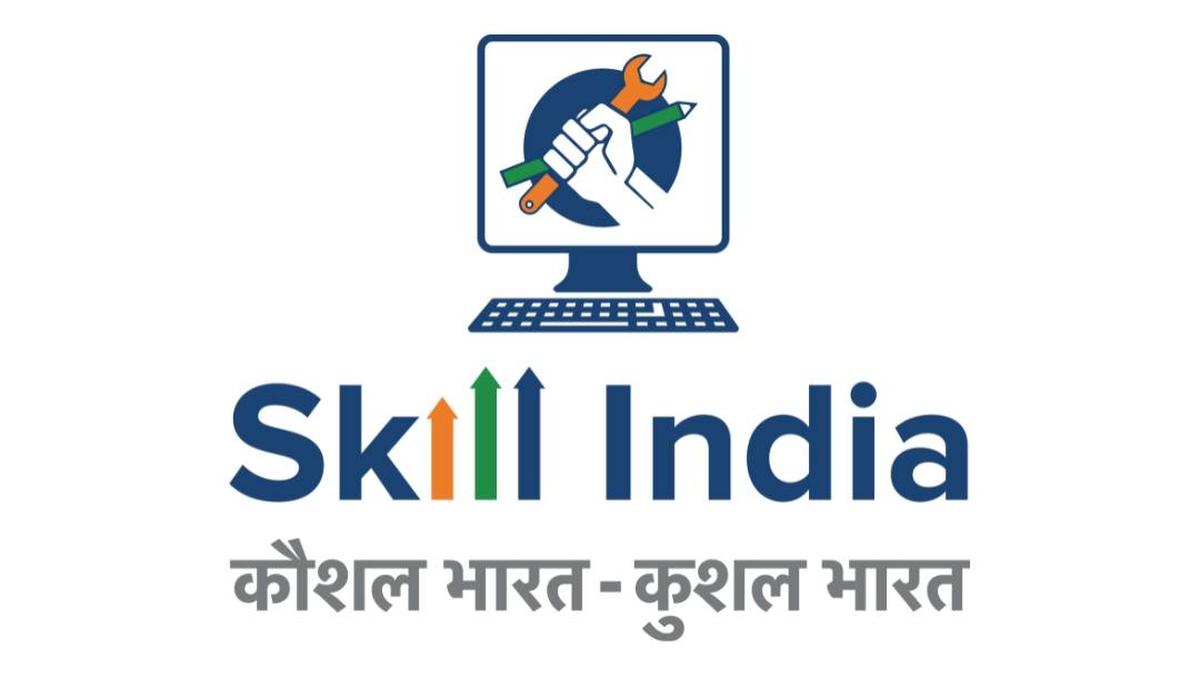Restructured Skill India Programme (2022–2026)

- 12 Feb 2025
In News:
The Union Cabinet has approved the continuation and restructuring of the Skill India Programme (SIP) till March 2026, with a financial outlay of ?8,800 crore.
The revamped programme consolidates three flagship schemes under a composite Central Sector Scheme—Pradhan Mantri Kaushal Vikas Yojana 4.0 (PMKVY 4.0), Pradhan Mantri National Apprenticeship Promotion Scheme (PM-NAPS), and Jan ShikshanSansthan (JSS)—with the aim to build a skilled, future-ready workforce.
Objectives and Vision
- Strengthen workforce development through industry-aligned, technology-enabled, and demand-driven skill training.
- Enhance global competitiveness, promote international mobility, and align with India's economic priorities such as Atmanirbhar Bharat, Make in India, and Digital India.
- Enable lifelong learning, skilling, reskilling, and upskilling through inclusive, flexible, and community-based training.
Beneficiaries and Coverage
- Over 2.27 crore individuals have benefited so far.
- Targeted age groups vary across schemes:
- PMKVY 4.0: 15–59 years
- PM-NAPS: 14–35 years
- JSS: 15–45 years
- Emphasis on marginalized sections, women, rural youth, aspirational districts, and the North-East Region.
Key Components of the Restructured Programme
1. Pradhan Mantri Kaushal Vikas Yojana 4.0 (PMKVY 4.0)
- Offers NSQF-aligned training via:
- Short-Term Training (STT)
- Special Projects (SP)
- Recognition of Prior Learning (RPL)
- Introduces 400+ new courses in emerging fields:
- Artificial Intelligence (AI), 5G, Cybersecurity, Green Hydrogen, Drone Technology.
- Establishment of Skill Hubs in premier institutions (IITs, NITs, JNVs, KendriyaVidyalayas, etc.).
- Focus on international mobility:
- Mobility Partnership Agreements (MMPAs), joint certifications, and language proficiency training.
- Blended learning models with digital delivery and regional language content.
- Integration with schemes such as PM Vishwakarma, PM Surya GharMuft Bijli Yojana, National Green Hydrogen Mission, and NAL JAL Mitra.
- Adoption of an Ease of Doing Business framework to reduce compliance burdens.
2. Pradhan Mantri National Apprenticeship Promotion Scheme (PM-NAPS)
- Promotes earn-while-you-learn through industry-specific apprenticeships.
- Government support of 25% stipend (up to ?1,500/month per apprentice) via Direct Benefit Transfer (DBT).
- Focus on both traditional and emerging sectors like AI, robotics, blockchain, green energy, and Industry 4.0.
- Encourages participation of MSMEs and enterprises in underserved regions.
3. Jan ShikshanSansthan (JSS) Scheme
- Community-based skilling for economically disadvantaged, rural youth, and women.
- Offers low-cost, flexible, doorstep training for both self-employment and wage-based livelihoods.
- Linked with initiatives such as PM JANMAN, ULLAS, and financial literacy campaigns.
- Also promotes awareness in health, hygiene, gender equality, and education.
Certification and Digital Integration
- All certifications are aligned with the National Skills Qualification Framework (NSQF).
- Integrated with DigiLocker and the National Credit Framework (NCrF), ensuring:
- Formal recognition of skills.
- Horizontal and vertical mobility in education and employment.
- Micro-credential courses (7.5 to 30 hours) and National Occupational Standards (NoS)-based training introduced.
Supporting Schemes and Initiatives
- SANKALP(Skill Acquisition and Knowledge Awareness for Livelihood Promotion).
- TEJAS (Skilling for international placement).
- Model Skill Loan Scheme.
Significance of Skill India Programme
- Demographic Dividend: With over 65% of India’s population below 35, the programme is pivotal in transforming potential into productivity.
- Employment & Entrepreneurship: Reduces unemployment through structured training, apprenticeships, and encourages skill-based startups.
- Global Workforce Readiness: Aligns with international standards, enabling Indian workers to access global job markets.
- Technological Preparedness: Equips the youth with skills in futuristic technologies.
- Inclusive Growth: Ensures urban-rural and gender-based equity in skilling access.
- Economic Impact: Supports India's manufacturing, IT, and services sectors, driving GDP growth.
